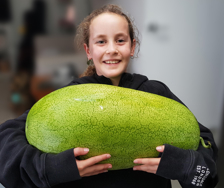Yates Account
Join now
Create a Yates account today!
Sign up to join the Yates Garden Club for monthly e-mails packed with seasonal inspiration, tips for success & exclusive promotions.
Plus if you’re a Garden Club member you can take part in the Yates Growing Community - a blog to share successes, get advice & win prizes in fun challenges along the way!

Forgot password
Enter the email address associated with your account, and we'll email you a new password.

Love the sight and scent of sweet peas? These magical flowers are one of the easiest plants to grow and while you won’t get a floral show until spring, now is the time to be sowing seeds. Train them to grow into teepees by planting the traditional varieties, which can reach dizzying heights of 1.5-2m, but if you’re short on space, plant dwarf forms which grow up to 30cm – ideal for window boxes or hanging baskets.
8-steps to how to create your own sweet pea teepee:
- Choose a well-drained spot in full sun, protected from strong winds.
- Enrich the soil with Yates Dynamic Lifter Organic Plant Food before planting.
- Sow into damp soil where the sweet peas are to grow and lightly cover with soil.
- Do not water for a couple of days after sowing. If the soil becomes dry water gently to keep it slightly moist while the seeds are germinating.
- Bundle at least three stakes together to form a tripod or tepee and secure with rope. Position around the seedlings, taking care not to damage them.
- As the seedlings grow, train them to climb up the frame.
- Once the seedlings have established, feed every 1-2 weeks with Yates Thrive Natural Fish & Seaweed+ Plant Food Concentrate.
- Pinch out the first buds to encourage bushier plants and remove any spent flowers to prolong the display.
Tip! If heavy rainfalls are expected close to planting time, start the seeds off in toilet paper rolls filled with damp seed raising mix. Don’t be tempted to water the seeds for a couple of days after sowing and only apply small amounts of water to keep the soil lightly moist. Once germinated, plant the toilet paper rolls containing the young plants directly where they are to grow and water in well.

Watch out, pests about!
Problem – Powdery Mildew:
Symptoms – White or ash-grey film that spreads over the upper surfaces of the sweet pea leaves, usually the older leaves.
Solution – Yates Rose Gun Spray Ready to Use
Problem – Snails and Slugs:
Symptoms – Silvery trails which can dry to appear like gold dust. Holes in leaves of plants and seedlings chewed off at the base
Solution – Yates Blitzem Slug & Snail Pellets
Problem – Thrips:
Symptoms – Thrips suck the sap, leaving a white mottled appearance on leaves.
Other symptoms include browning on petals and fruit and flower drop.
Solution – Yates Nature's Way Organic Citrus, Vegie & Ornamental Spray Ready to Use
















Share
Share this article on social media